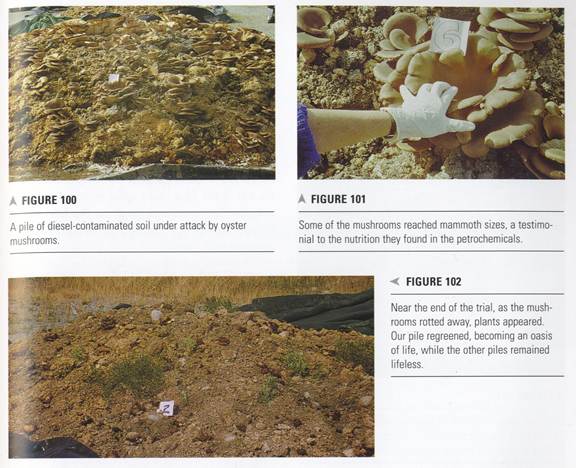

|
Mycoremediation |
||
| Definition | ||
Mycoremediation is a form of bioremediation in which fungi is used to degrade or isolate contaminants in soil. Mycoremediation can be used in soil that is contaminated with petroleum or diesel oil, because the fungi can reduce the polycyclic aromatic hydrocarbons (PAH). How it Works From Paul Stamets’ TED talk: In Bellingham, WA, a remediation experiment was conducted, where four piles of soil were contaminated with diesel, with a concentration of polycyclic aromatic hydrocarbons (PAHs) of 10,000 ppm. One pile was then treated with enzymes, one was treated with bacteria, one was treated with oyster mushroom mycelium, and one was untreated, as a control. The piles were left covered, and after six weeks, three of the piles showed no improvement, while the pile treated with mycelium was covered in hundreds of pounds of healthy mushrooms. From “Oil Spills and Mycoremediation” by Paul Stamets: “Mycelium more readily degrades lower molecular weight hydrocarbons”, but mycelium’s enzymes can reduce the heavier hydrocarbons into lighter ones, allowing for staged mycoremediation treatment. Aged mycelium mixed with compost shows significantly greater results in hydrocarbon decomposition. Success rates are greater in nitrogen- limited environments. Generally, mycelium inoculations in the spring have a greater success rate than inoculations in the fall, because the mycelium has a longer time to develop. There are many unanswered questions and avenues to be explored in this topic, including: what other species besides oyster mushrooms could be used? Could mycoremediation mushrooms be safe to eat? Could the remediated soils be suitable for food crops? Further funding and research is needed. (Stamets 2010) |
||
